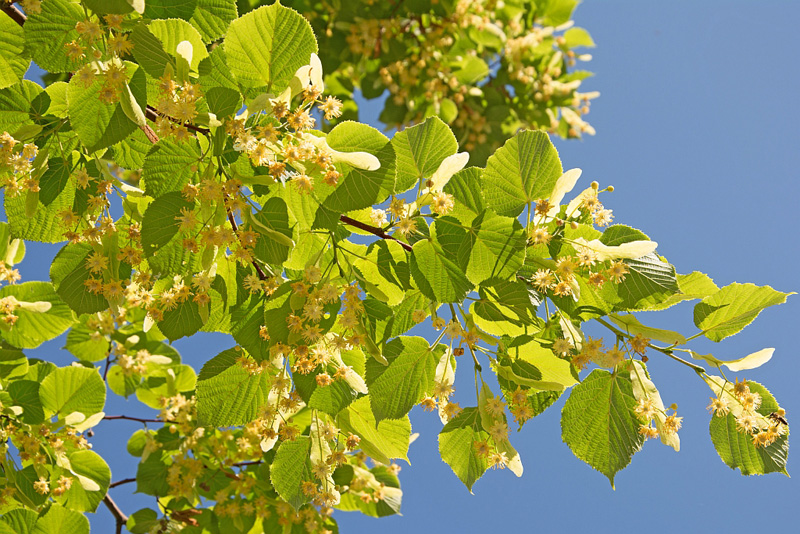5 Great Trees for Feeding Honeybees
Introduction
Honeybees are essential pollinators facing threats like Colony Collapse Disorder . Providing food sources, such as specific trees, can support honeybee populations and enhance your landscape. Trees offer abundant nectar and pollen, crucial for honeybee survival, especially during early spring and late fall when other food sources are scarce. Selecting appropriate tree species can make a significant difference in sustaining healthy bee populations and ensuring biodiversity in urban environments.
Since these bees are vital to the agricultural production of dozens of different food crops, their decline virtually guarantees eventual problems with the global food supply. With everything going on, it makes sense to do all you can to give honeybees a helping hand. Providing your local honeybees with a ready, abundant food source makes their lives better and makes your landscaping a more welcoming place.
While honeybees may feed on the nectar of several different plant and tree species, the following six trees represent some of their favorites. As always, be sure to consider the climate and soil chemistry of your geographic area before selecting a specific species, and plant all trees in suitably large spaces to give them the best chance to thrive.

A Tulip Tree Branch with a Large Bloom
Tulip Tree ( Liriodendron tulipifera )
Tulip trees are among the tallest trees native to the eastern United States, and they regularly exceed one hundred feet in height. Like most other pioneer trees , tulip trees grow very quickly, so they make an excellent option for landscapes with enough space to accommodate their eventual size. As a bonus, these trees contribute to soil stabilization and offer habitat for various wildlife species, enhancing overall ecosystem health. Like many other early-succession species, tulip trees require an abundance of sunshine and moderate amounts of rainfall to thrive, so they aren’t well suited for drought-prone areas. Additionally, because tulip trees hold their flowers high atop the canopy, they keep the bees far above your head—you will never even know they are there.

The Gorgeous White Blooms of a Black Locust Tree
Black Locust ( Robinia pseudoacacia )
Black locust trees are hardy and adaptable, thriving in various environments, particularly in old fields and on forest edges. They grow up to seventy feet, are suitable for many yards, and produce nectar-rich flowers that attract honeybees. Black locust honey is known for its fruity flavor, and its color varies dramatically. These trees are nitrogen fixers, improving soil fertility and supporting other plant growth. However, they can be invasive in some areas, so it’s essential to manage their spread and consult with local experts before planting.

Clusters of Small, Fragrant Flowers Adorn this American Basswood Tree Branch
American Basswood ( Tilia americana )
American basswoods , also known as lime trees, are excellent shade providers with dense canopies and fragrant flowers. The aroma of these flowers attracts honeybees and other pollinators from great distances, making basswoods vital for urban bee support. The honey produced from basswood nectar is light in color and has a sharp, distinct flavor. Basswoods also contribute to air purification and noise reduction in urban areas. Their large leaves and dense foliage provide cooling shade, reducing the urban heat island effect and creating comfortable outdoor spaces.

The Signature Leaves of the Red Maple Tree
Red Maple ( Acer rubrum )
Red maples are highly popular ornamental trees known for their vibrant fall colors and early spring blooms. While their early blooming can sometimes coincide with cooler weather, limiting bee activity, they still provide crucial early-season nectar. Red maples are adaptable, thriving in various soil types and conditions, making them versatile additions to urban landscapes. These trees also offer ecological benefits such as erosion control and habitat for wildlife, enhancing the biodiversity and resilience of urban ecosystems.

The Leaves and Trunk of a Sourwood Tree
Sourwood ( Oxydendron arboreum )
Sourwood trees , or sorrel trees, are important understory trees in eastern North America, producing small, bell-shaped flowers that attract honeybees. Although nectar flow varies greatly from one year to the next, sourwoods produce some of the best honey in the world. Sourwood honey is highly prized for its aromatic, fruity taste and light color. Sourwoods are not especially flamboyant trees; however, this is not to suggest they aren’t aesthetically pleasing. These trees grow with a characteristic lean and have attractive, furrowed bark, adding visual interest to landscapes. Sourwoods thrive in acidic soils and partial shade, making them suitable for various garden settings. Their nectar production supports honeybee populations and other pollinators, contributing to ecosystem health.
Getting Professional Help for Planting Trees
Selecting and planting the right trees for honeybees requires careful consideration of local climate and soil conditions. Arborist Now offers expert tree care services in the San Francisco Bay area, helping you choose and maintain bee-friendly trees. Our team provides planting, pruning, and maintenance services to ensure your trees thrive and support honeybee populations. Contact us today for professional advice and services tailored to your landscape needs.
Sourwood photo from Wikipedia .
Originally published on May 17, 2016.


